FROM EDITOR-IN-CHIEF
This special issue of the journal "Patient-Oriented Medicine and Pharmacy" is dedicated to the 55th anniversary of the Faculty of Pediatrics at Yaroslavl State Medical University, which was reorganized in 2025 into the Institute of Pediatrics and Reproductive Health. The issue presents an analytical review of current achievements and promising directions in the development of domestic pediatrics. Key issues in children's healthcare are highlighted, including innovative approaches to targeted therapy of allergic diseases using monoclonal antibodies, modern strategies for the diagnosis and management of preterm infants, the latest data on gastrointestinal manifestations of food allergies, as well as current aspects of the diagnosis and rehabilitation of childhood dysphonia. Particular attention is paid to organizational matters, including the digitalization of drug supply for children with rare diseases and an analysis of the impact of the digital transformation of education on schoolchildren's health. The issue's materials demonstrate the continuity of traditions of the national pediatric school and its readiness to address modern challenges. The reorganization of the Faculty into an Institute is presented as a natural stage of development aimed at training highly qualified specialists and strengthening the University's role in the development of children's healthcare and reproductive medicine in Russia.
NEW DRUGS AND HEALTH TECHNOLOGIES
Monoclonal antibodies have significantly expanded the therapeutic options for severe allergic diseases by targeting key mechanisms in their pathogenesis. This review briefly presents data on the efficacy and safety of monoclonal antibodies that are not registered in the Russian Federation but have successfully completed late-stage clinical trials or have been approved by the U. S. FDA for the treatment of asthma, atopic eczema, allergic rhinitis, eosinophilic esophagitis, food allergy and chronic spontaneous urticaria. Further research is needed to evaluate their long-term safety, along with efforts to address registration challenges and to make these drugs more accessible for routine medical practice in the Russian Federation.
PEDIATRICS
Relevance. Regurgitation (regurgitation) is a common problem among infants. Intensive regurgitation can affect the quality of life of a child and his family. Prevention of this disease requires understanding the cause-and-effect relationships between perinatal risk factors and the syndrome itself. Timely identification of perinatal predictors will allow for the implementation of
primary personalized preventive measures for this condition.
Objective. To identify negative factors during pregnancy and childbirth, as well as to assess their relationship with regurgitation syndrome in infants.
Materials and methods: A retrospective study was conducted, which included 88 children born at term, in satisfactory condition, with an assessment of perinatal risk factors and the nature of functional disorders of the digestive tract based on a questionnaire.
Results. A statistically significant relationship was established between gestosis in a mother and regurgitation in her child (p = 0.002, n = 40), as well as their intensity (p = 0.02, n = 21). The analysis did not reveal any significant links between specific manifestations of gestosis in the mother and regurgitation in her infant. When analyzing the intensity of regurgitation, a number of patterns were identified: minimal regurgitation was 1 point more common in children whose mothers suffered from gestosis in the third trimester of pregnancy (p = 0.00015, n = 7) or gestational diabetes (p = 0.00015, n = 7); high-intensity regurgitation, rated at 4 and 5 points, was significantly more common in children born as a result of rapid childbirth (p = 0.00011, n = 6).
Conclusion. Registration of gestosis or gestational diabetes in the expectant mother, as well as rapid childbirth, will make it possible to identify her baby at risk for regurgitation and timely organize preventive measures aimed at reducing the frequency and severity of this syndrome.
Relevance. Deviations in somatometric indicators in infancy lay the foundation for the development of chronic diseases in the future. The search for early prognostic indicators of physical development disorders in premature infants creates the prerequisites for their timely correction.
Objective. To determine the significance of changes in blood levels of IGF-1 in the neonatal period for predicting the physical development of premature infants.
Materials and methods. A prospective controlled study of 73 premature infants was conducted. Physical development indicators at 6 and 12 months of age were analyzed in two groups of children with different dynamics of insulin-like growth factor-1 (IGF-1) levels in the blood during the neonatal period.
Results. At 6 and 12 months of age, deviations in height or body weight from reference values were more common in children who had relatively low hormone levels in the early neonatal period, followed by an increase.
Conclusions. The dynamics of somatometric parameters in infants with increasing IGF-1 levels in the blood during the neonatal period indicate the possibility of using this biochemical indicator for early prediction of physical development deviations in premature infants.
Premature babies have anatomical and physiological features, including immaturity of organs and systems, which makes them more vulnerable to various diseases. Such children are often born with low body weight and insufficient muscle mass, which can negatively affect their physical development. Nutrition of such patients plays a key role in their further development. Due to lack of muscle strength and coordination, they may show delayed motor development. Early intervention and physical therapy programs can significantly improve motor skills and overall physical development. Features of physical development of premature babies are considered, focusing on their anatomical and physiological characteristics, nutritional features, motor activity and common pathology such as bronchopulmonary dysplasia.
Intestinal stoma formation in neonates with severe gastrointestinal diseases or congenital malformations remains a critical and challenging issue in neonatology. Postoperatively, preventing associated complications-such as high enteric stoma losses, electrolyte imbalances, malabsorption syndrome, cholestasis, and small intestinal bacterial overgrowth — is equally urgent. Effective neonatal resuscitation with intensive stabilization, comprehensive monitoring, homeostasis correction, and infection control is essential. Early initiation of enteral nutrition (starting with trophic feeds and gradually advancing based on the preserved bowel’s capacity) alongside parenteral support is crucial post-surgery. Breast milk provision and maternal involvement in stoma care are vital components. The ultimate goal of management is to prepare the infant for definitive reconstructive surgery.
Background. Cow’s milk protein (CMP) allergy is the most prevalent form of food allergy in infants, with a prevalence of up to 4.9 %. The nonspecific symptoms of non-IgE-mediated gastrointestinal forms (proctocolitis, enterocolitis, and enteropathy) complicate timely diagnosis and therapy.
Objective. This study aimed to investigate the clinical and morphological characteristics of gastrointestinal food allergy to CMP in early childhood, assess age-specific manifestation patterns, diagnostic accuracy, and elimination diet efficacy, and identify prognostic factors for tolerance development.
Materials and methods. A retrospective analysis of infants aged 2 weeks to 2 years with confirmed non-IgE-mediated CMP allergy was conducted. The diagnostic workup included clinical history, stool clinical analysis (with fecal calprotectin), skin tests, and intestinal mucosa biopsies. The effectiveness of the therapeutic (infant) formula as part of the elimination strategy was evaluated.
Results. Three main forms were identified: FPIAP (manifestation at 2–6 weeks), FPIES (before 3 months), and FPE (after 4 months), each with specific clinical and morphological features. The therapeutic (infant) formula demonstrated 98.4 % clinical efficacy, leading to symptom resolution, weight gain normalization, and mucosal recovery. CMP tolerance developed in most infants by age 3 for FPIAP and FPIES and by age 5 for FPE.
Conclusions. Non-IgE-mediated gastrointestinal CMP allergy with age-dependent clinical profiles in infants. Elimination therapy using extensively hydrolyzed formula yields high efficacy in symptom resolution and promotes earlier acquisition of tolerance.
Relevance. The origins of cardiovascular pathology lie in childhood. The introduction of preventive medicine technologies in pediatrics should lead to significant results in the maintenance of adult health.
Objective. To study the state of the microcirculatory and tissue systems in schoolchildren to determine pre-nosological cardiovascular risk screening markers.
Materials and methods. A comprehensive examination of 190 school-age children (14–17 years old) was conducted at the Children’s Health Center of Smolensk as part of preventive examinations of schoolchildren. Random sampling was used to enroll 82 schoolchildren. The examined schoolchildren were divided into 3 groups: Group 1–24 schoolchildren with a body mass index (BMI) within ±1 SDS BMI (kg/m2) and a normal outpatient blood pressure level; Group 2–36 schoolchildren with a BMI within ≥ +1 SDS BMI (kg/m2) and a normal outpatient blood pressure level; and Group 3 comprised 22 schoolchildren with a BMI in the range ≥ +1 SDS BMI (kg/m2) and elevated systolic blood pressure. Comprehensive examination of the schoolchildren included anthropometry [weight, height, BMI (kg/m2)], laser Doppler flowmetry, and fluorescence spectroscopy of the skin in the forearm area using a «Lasma PF» analyzer (Russia).
Results. Analysis of the structure of the functional state of the microcirculatory and tissue system (FS MTS) in the examined schoolchildren revealed that in children of the 2nd Group, increased activity of FS MTS was recorded 1,8 times more often (p < 0,05) than in children of the 1st Group, and FS decompensation was already noted MTS in 11.1 % of children of the 2nd Group. In the 3rd Group, compared with the 2nd Group, active FS MTS was 7,8 times less likely to be registered, indicating the preservation of compensatory and adaptive mechanisms at the microcirculatory level. Simultaneously, 72.7 % of the children in Group 3 showed increased FS MTS activity, and FS MTS compensation was detected significantly more often than in Groups 1 and 2.
Conclusions. Screening prenosological markers of cardiovascular risk in overweight/obese schoolchildren according to the results of laser Doppler flowmetry and laser fluorescence spectroscopy (Lasma PF) are the "increased activity" of FS MTS against the background of high values of the flaxmotion index (increased sympathetic effects on microcirculatory blood flow).
Relevance. Nutritional status disorders are common in patients with cerebral palsy (CP) and are caused by multiple factors related to the disease and its complications. They aggravate the underlying disease, reduce the quality of life, and decrease rehabilitation effectiveness.
Objective. To study the body composition characteristics of children with CP using bioimpedance analysis.
Materials and methods. Body composition parameters were studied to assess the nutritional status of 100 children with CP.
Results. The study revealed significant differences in body composition in children with CP associated with nutritional deficiencies. Latent changes in body composition were detected in children without physical developmental delays. Follow-up after 12 months confirmed a progressive decrease in the active cell mass, lean body mass, and skeletal muscle mass in patients with CP.
Conclusions. Children with cerebral palsy have been shown to have significant changes in body composition, including decreased muscle and fat mass, which progress over time even with normal anthropometric parameters.
OTORHINOLARYNGOLOGY
Introduction. The voice is a basic component for the successful and comprehensive development of a child's personality, the formation of his character and the formation of certain behavioral characteristics. Voice defects can in the future become an obstacle to the chosen specialty, which is extremely important in the professional orientation of a teenager. Dysphonia in children is not a temporary problem, it requires close attention from parents, teachers and doctors, high-quality diagnostics taking into account age characteristics, as well as the selection of optimal treatment for the purpose of rehabilitating the voice function and creating conditions for the comprehensive development of the child.
Objective. To assess the nature of laryngeal pathology in children and adolescents at an outpatient appointment with an otolaryngologist-phoniatrist, to analyze the factors influencing the effectiveness of rehabilitation measures.
Materials and methods. The study included 97 children and adolescents aged 5 to 17 years inclusive. A comprehensive examination of patients included history, assessment of complaints, voice condition, quality of life, ENT examination using endoscopic equipment. Voice quality was assessed subjectively using the GRBAS scale. Voice Handicap Index (VHI) questionnaire was used to assess the quality of life.
Results. The identified laryngeal pathology in children was characterized by a variety of functional and organic changes: mutation (48), vocal fold nodules (37), vocal fold cysts (2), vocal fold polyp (1), neurogenic and myogenic laryngeal paresis (6), contact granuloma (1), chronic laryngitis (2). The most common comorbid pathologies were adenoid (78.4 % of children), allergic rhinitis (23.7 %), chronic tonsillitis, tonsil’s hypertrophy (47.4 %), and gastroesophageal reflux (12.4 %). The highest GRBAS values were recorded in children with chronic laryngitis and larynx contact granuloma. The worst quality of life indicators was demonstrated by children with vocal fold paralysis. The most non-compliant with respect to treatment and dynamic observation were children with vocal fold nodules.
Conclusions. The most common causes of dysphonia in children are mutation (49.5 %) and vocal fold nodules (38.1 %). In most cases, parents do not initiate a visit to a specialist of voice disorders, since they either do not notice the problems that arise in the child due to voice disorders or do not focus on them. The effectiveness of rehabilitation measures depends on the patient's compliance.
INFECTIOUS DISEASES
Background. The relevance of modern infectious mononucleosis (IM) is due to its high prevalence, lifelong persistence of the pathogen in the human body, virus-induced immunosuppression during active viral replication, and the lack of effective treatments and preventive measures.
Objective. To analyze the clinical and epidemiological aspects of infectious mononucleosis in children at the present stage.
Materials and methods. The study included 316 patients hospitalized at the Yaroslavl Regional Infectious Diseases Clinical Hospital between 2021 and 2023.
Results and discussion. The most affected age groups were children aged 4-6 and 11-17 years. The characteristic symptoms of IM remain fever, nasal obstruction, tonsillitis, lymphadenopathy, exanthema, and hepatosplenomegaly. Icteric forms of the disease were rare. In most patients, the onset of rash was associated with the administration of semi-synthetic penicillins at the prehospital stage. Atypical mononuclear cells were detected in only 52.2% of children, making diagnosis based solely on a complete blood count challenging. Epstein-Barr virus (EBV) alone or in combination with cytomegalovirus (CMV) was the dominant cause of primary infection. Reactivation was primarily caused by CMV following primary EBV infection in almost all patients. In most children with tonsillar exudate, a low C-reactive protein level indicated a viral etiology of tonsillitis and argued against the need for antibiotic therapy.
EPIDEMIOLOGY
Introduction. A child's health is shaped, to a certain extent, by their daily activities within the context of digital school transformation. The process of digitalization in Russian schools has been ongoing for over 30 years, and education experts identify 4 stages. The first stage (the 1990s) involved the technological upgrading of schools; the second (2000-2010) was "early informatization"; the third (2010-2019) was "mature informatization"; and the fourth (2019-2023) marks "the beginning of the digital transformation of education". The impact of digital environment factors on schoolchildren's health has not been sufficiently studied.
Objective. To study the main trends in the morbidity of students with school-related diseases across the four stages of digital school transformation.
Materials and methods. The analysis was based on data published in the statistical collections of the Central Research Institute of Healthcare Organization and Informatization of the Ministry of Health of the Russian Federation. We analyzed the incidence and prevalence rates of diseases among children (0–14 years) and adolescents (15–17 years) during the four stages of digital school transformation. The following school-related health disorders were selected: myopia, neuroses, somatoform disorders, and vegetative-vascular disorders with increased blood pressure (caused by visual and psycho-emotional stress), as well as conditions partly associated with physical inactivity and prolonged sitting — scoliosis and obesity/
Results. Analysis of the dynamics of incidence and prevalence in children and adolescents showed that during the first and second stages of digital school transformation, morbidity increased for almost all the considered disease classes and nosologies. This was due to educational digitalization and the adverse influence of numerous socio-economic factors. During the third stage, the increase in morbidity halted. At the beginning of the fourth stage, incidence and prevalence rates began to gradually rise again. Over the period from 1995 to 2023, the incidence rate in children increased by 55.9 %, and the prevalence rate by 46.9 %; among adolescents, these figures increased by 106.5 and 105.3 %, respectively.
Conclusions. During the period of digital school transformation from 1995 to 2023, the health status of the child and adolescent population deteriorated. A steady increase in the incidence of myopia and obesity among children and adolescents was revealed, and the incidence of musculoskeletal system diseases also increased. To facilitate further research on this problem, it is necessary to include a broader range of school-related diseases in statistical reporting forms and collections.
Relevance. The leading indicator reflecting the state of physical development of children is body weight, which characterizes the development of the musculoskeletal system, subcutaneous fat, and internal organs.
Objective: to assess the formation of body weight in schoolchildren aged 7–17 in forty constituent entities of the Russian Federation.
Materials and methods. The study included 40 regions of the Russian Federation located in all Federal Districts. The regions were selected in such a way that almost every age and sex group would be presented with body weight indicators (kg) for at least 100 schoolchildren aged 7–17.
Results and discussion. The analysis of age-sex curves of body weight showed that in almost all 40 regions there is a smooth increase in body length with age in both boys and girls, which is consistent with biological patterns such as directionality, gradualness, irreversibility, heteromorphism and heterochrony. In boys, in almost all age groups and at the time of completion of growth processes, the body weight indicator reliably (p≤ 0.05) exceeds the indicators in girls, which is consistent with such a pattern as the dependence of growth and development on sex (sexual) dimorphism.
Conclusion. We can discuss the harmonious flow of growth and development processes in the analyzed regions.
PHARMACY BUSINESS ORGANIZATION
Background. Pharmaceutical care for children with rare diseases is an integral part of the state-sponsored drug benefit system and is facilitated through the Circle of Kindness Foundation. The digitalization and standardization of business processes for the circulation of medicines will help eliminate practical challenges and mitigate risks in managing treatment for these children at the regional level.
Methods. The study employed a set of scientific methods, including system, logical, and structural analysis. The objects of the study were regulatory legal acts, the International Classification of Diseases (ICD), the State Register of Medicines, the Unified Register of Registered Medicines of the Eurasian Economic Union, inventory management systems, and analytical data
from the official websites of government agencies regulating rare diseases and the "Circle of Kindness" Foundation for Support of Children with Severe Life-Threatening and Chronic Diseases.
Results. Regional-specific aspects of digitalizing drug provision for children with rare diseases were identified.
Conclusion. Enhancing the regulatory framework for digital transformation and standardizing the list of unregistered medicines based on digital information from barcodes or Data Matrix codes will optimize existing digital resources in the field of pharmaceutical care for citizens with rare diseases at the regional level.
HISTORY
This analytical review is dedicated to the 55th anniversary of the Faculty of Pediatrics of Yaroslavl State Medical University, which was reorganized in December 2024 into the Institute of Pediatrics and Reproductive Health. The review examines the establishment and development of pediatric education in Russia in general and at Yaroslavl Medical University in particular. It addresses the organization of an effective educational process that contributes to fulfilling the Institute's most important tasks: training highly qualified specialists both in pediatrics and in the field responsible for the population's reproductive health. This is done to uphold the priorities of preventive reproductive healthcare, and the protection of motherhood and childhood.
Адрес редакции и издательства:
ООО «Издательство ОКИ»
115522, Москва, Москворечье ул., 4-5-129
Генеральный директор Афанасьева Елена Владимировна
Тел. + 7 (916) 986-04-65; Email: eva88@list.ru



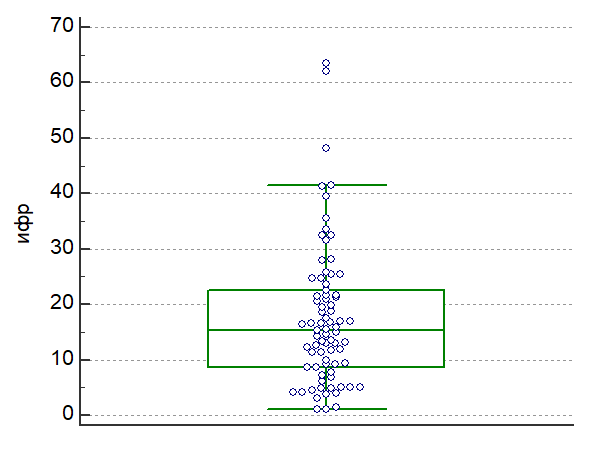
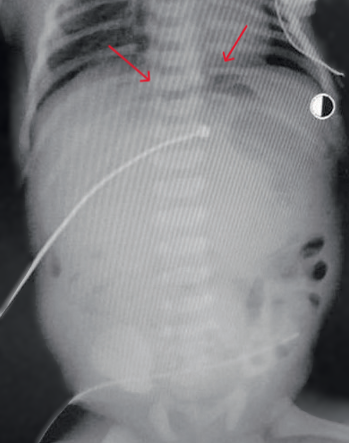

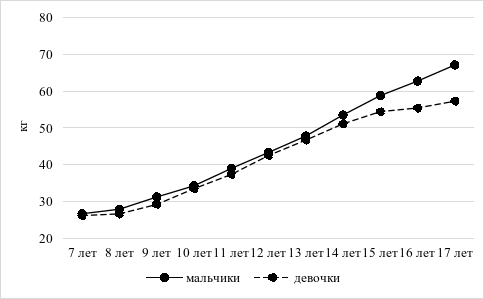
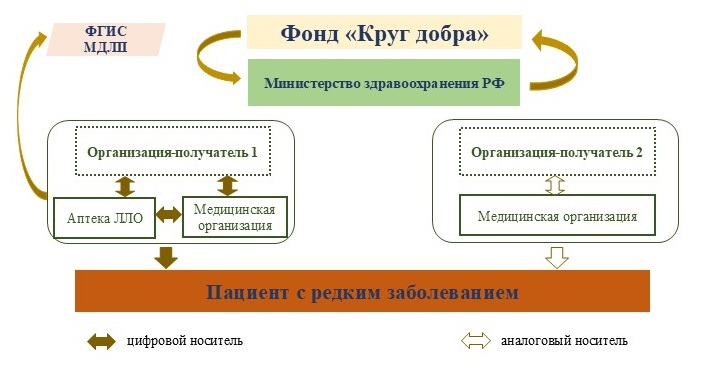



























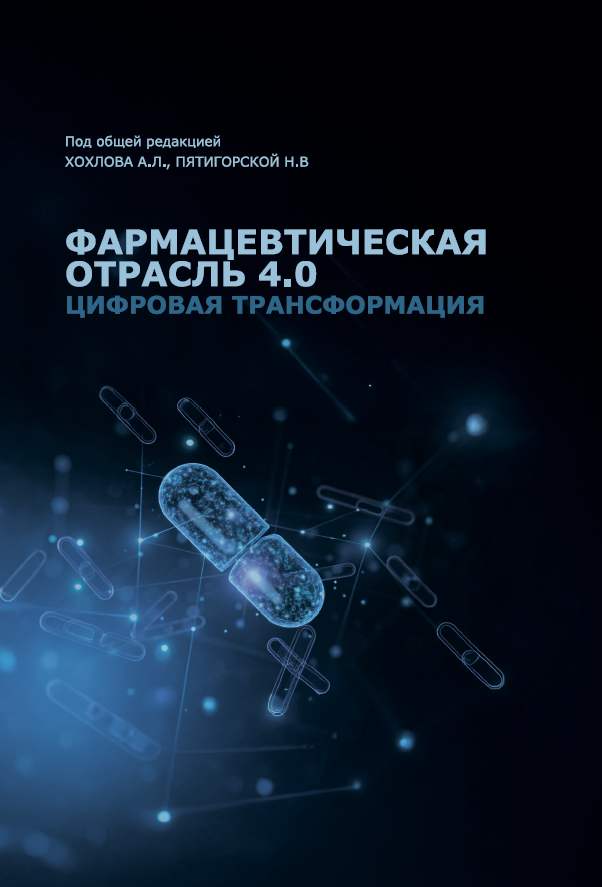


.png)
